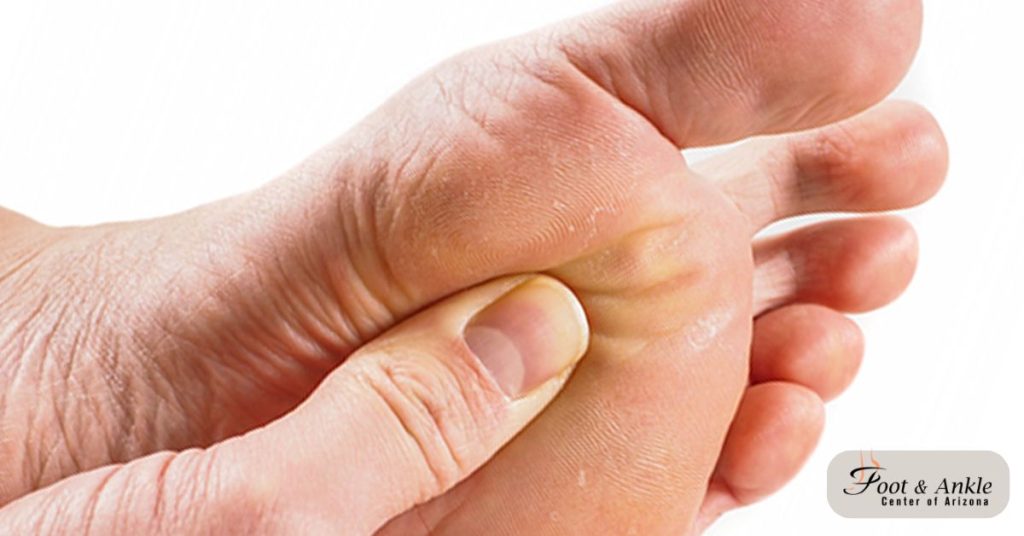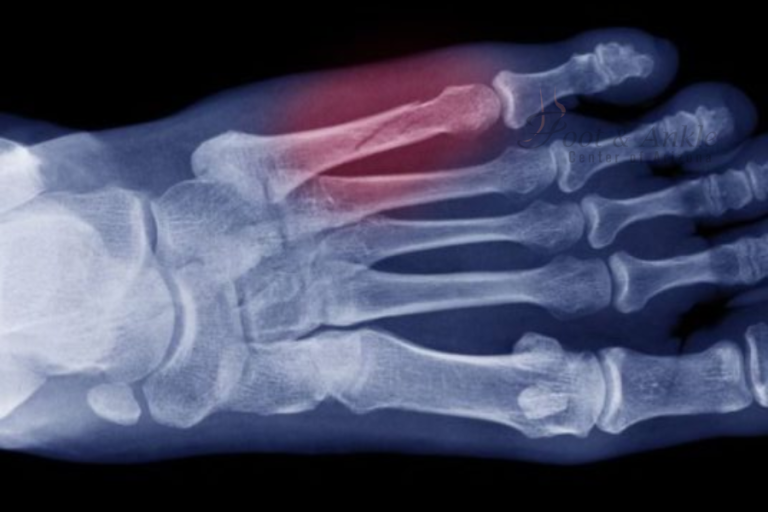Morton’s neuroma is a painful circumstance that influences the ball of your foot, most normally between the 0.33 and fourth feet. This situation includes a thickening of the tissue around one of the nerves leading to your feet, causing sharp, burning aches within the ball of your foot and stinging or burning pain in the feet. If you’ve been diagnosed with Morton’s neuroma, understanding what you must and need to no longer do is critical for handling the circumstance and avoiding similar headaches. In this newsletter, we are able to talk about “What have you no longer do with Morton’s neuroma?” and provide vital tips to help you control this painful foot circumstance.
Understanding Morton’s Neuroma
Before delving into what you have to avoid, it’s critical to recognize what Morton’s neuroma is. The circumstance is named after Dr. Thomas Morton, who first defined it in the nineteenth century. It isn’t always a real tumor however, but rather a perineural fibrosis, which is a thickening of the tissues surrounding the virtual nerve main to the toes. This thickening can cause sizeable pain, and in some cases, it might require surgical intervention, together with neuroma excision, for alleviation.
What Should You Not Do with a Morton’s Neuroma?
Avoid Wearing Tight or High-Heeled Shoes
Wearing shoes that might be too tight or have excessive heels can exacerbate the signs of Morton’s neuroma. These sorts of footwear put greater pressure on the ball of your foot and might squeeze the metatarsal bones collectively, further annoying the affected nerve. Instead, opt for footwear with a huge toe box and true arch to help alleviate strain. High heels and footwear with a slim toe field are notorious culprits for worrying Morton’s neuroma, as they squeeze your feet collectively, placing strain on the infected nerve.
Do Not Ignore Persistent Pain
Ignoring the ache or pain in your foot can result in more severe problems. If you experience constant pain, tingling, or numbness inside the ball of your foot or feet, it is critical to seek medical recommendations right away. Early intervention can prevent the circumstance from worsening and decrease the need for extra-invasive remedies like neuroma elimination surgical procedures. Ignoring the early signs of Morton’s neuroma can lead to similar inflammation and irritating signs.
Avoid High-Impact Activities
Engaging in high-impact sports or activities, which include jogging, jumping, or dancing, can worsen the symptoms of Morton’s neuroma. These activities placed extra stress on the ball of the foot, annoying the nerve. Low-impact sports such as swimming or cycling are better alternatives for staying active without exacerbating the situation. While exercising is critical for usual fitness, enhancing your routine to include lower-impact activities or taking breaks when experiencing pain can assist in controlling signs.
Do Not Self-Medicate Without Consulting a Doctor
While over-the-counter pain medicines would possibly offer brief relief, they no longer deal with the underlying motive of Morton’s neuroma. Additionally, extended use of painkillers can have unfavorable effects. It is important to seek advice from a healthcare expert, inclusive of Dr. Kris A. DiNucci, DPM, FACFAS, to talk about suitable treatment alternatives, which include orthotics, physical therapy, or feasible neuroma excision. Self-treating with over-the-counter medications can mask signs quickly however may not solve the underlying problem.
Avoid Neglecting Proper Foot Care
Proper foot care is crucial while handling Morton’s neuroma. This consists of everyday stretching sporting events to relieve anxiety within the foot, using ice packs to lessen infection, and massaging the foot to alleviate pain. Neglecting foot care can extend recuperation and increase the likelihood of requiring greater competitive treatments like neuroma excision. Custom orthotic insoles can also be tremendously effective in managing signs with the aid of redistributing strain throughout your foot.
Treatment Options for Morton’s Neuroma
If conservative treatments do not provide relief, more advanced options might be necessary. Dr. Kris A. DiNucci, DPM, FACFAS, specializes in treating Morton’s neuroma and can offer various solutions tailored to your needs.
Neuroma Excision
One effective remedy choice is neuroma excision. This surgical treatment involves disposing of the inflamed nerve tissue to alleviate pain. Neuroma excision can offer significant relief for sufferers who do now not respond to non-surgical remedies.
Custom Orthotics
Custom orthotics can help redistribute pressure on your foot, providing support and reducing strain on the affected nerve. These specially designed shoe inserts can be a crucial component of a comprehensive treatment plan.
Physical Therapy
Physical therapy exercises can strengthen the muscles around the foot and improve flexibility, reducing symptoms and preventing recurrence. A physical therapist can guide you through specific exercises tailored to your condition.
Injections
Corticosteroid injections can help reduce inflammation and pain in the affected area. These injections provide temporary relief and can be part of a broader treatment strategy.
Frequently Asked Questions
Can Morton’s Neuroma Go Away on Its Own?
In some instances, with proper care and lifestyle changes like wearing suitable footwear and the use of orthotics, Morton’s neuroma symptoms may additionally improve on their own. However, in other cases, in particular, when left untreated, the condition can get worse. Seeking professional assessment is critical for a personalized remedy plan.
What Are the Typical Symptoms of Morton’s Neuroma?
The most unusual symptom of Morton’s neuroma is a burning, sharp pain in the ball of your foot, regularly between the third and fourth toes. The pain can also be experienced like something is stuck between your feet and might get worse with the hobby that puts pressure on the forefoot.
How Is Morton’s Neuroma Diagnosed?
A podiatrist will typically diagnose Morton’s neuroma through a bodily examination and might use imaging assessments like X-rays or ultrasounds to rule out different situations.
What Are the Treatment Options for Morton’s Neuroma?
Treatment options for Morton’s neuroma vary depending on the severity of your symptoms. Conservative remedies regularly encompass wearing appropriate shoes, the use of orthotics, ache medication, and hobby modification. In extreme cases, removal of Morton’s neuroma (neuroma excision surgical procedure) can be advocated by Dr. DiNucci.
How Can I Prevent Morton’s Neuroma?
Wearing properly-becoming footwear with the proper arch guide and a huge toe container is crucial for preventing Morton’s neuroma. Maintaining a healthy weight and warding off sports that position immoderate pressure at the forefoot also can assist.
What Should You Not Do with a Morton’s Neuroma If You Are an Athlete?
Athletes ought to keep away from high-effect activities that put excessive pressure on the ball of the foot. Instead, they have to recognize low-effect sports and bear in mind the usage of custom orthotics to aid their feet in the course of training.
How Long Does It Take to Recover from Neuroma Excision Surgery?
Recovery from neuroma excision surgical treatment varies among people, however, maximum sufferers can count on a restoration duration of numerous weeks to 3 months. Following the surgeon’s publish-operative care commands is vital for a smooth recovery.
Is Morton’s Neuroma Removal Surgery Painful?
Morton’s neuroma elimination surgical procedure is generally done below nearby or fashionable anesthesia, so you ought to no longer feel ache throughout the method. Post-operative aches can be managed with prescribed medicinal drugs and the right care.
Can Wearing the Right Shoes Help Manage Morton’s Neuroma Symptoms?
Yes, carrying footwear with a wide toe field, good arch support, and cushioned soles can help alleviate the signs and symptoms of Morton’s neuroma with the aid of decreasing stress on the affected nerve.
Conclusion
Understanding “What must you not do with a Morton’s neuroma?” is critical for handling the situation and averting further complications. By warding off tight and high-heeled shoes, no longer ignoring chronic pain, heading off excessive-impact sports, consulting a physician earlier than self-medicating, and retaining right foot care, you could appreciably lessen soreness and improve your exceptional of existence.
If you are stricken by Morton’s neuroma, keep in mind consulting with Dr. Kris A. DiNucci, DPM, FACFAS, to explore the high-quality treatment options for your condition. Whether it includes conservative management or advanced procedures like neuroma elimination foot surgical treatment, professional steering will let you locate alleviation and get returned for your daily sports pain-loose.
Remember, timely intervention and the right care are key to handling Morton’s neuroma successfully. By following those tips, you could take proactive steps in the direction of a pain-loose destiny and avoid the need for more invasive remedies along with neuroma excision.




